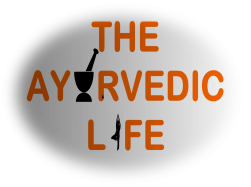 Undoubtedly the most popular festive offering to Lord Ganesha, kozhukattais or modaks are nutritious, delicious and visually, a fine work of art! The outer covering is made using rice flour and water. The filling is made of coconut and jaggery and spiced with hints of cardamom. This is my dear mother’s recipe, with pictures taken while making kozhukattais with her, during a recent trip to India!
Undoubtedly the most popular festive offering to Lord Ganesha, kozhukattais or modaks are nutritious, delicious and visually, a fine work of art! The outer covering is made using rice flour and water. The filling is made of coconut and jaggery and spiced with hints of cardamom. This is my dear mother’s recipe, with pictures taken while making kozhukattais with her, during a recent trip to India!
Ingredients (makes about 15 medium sized kozhukattais):
- Rice flour (1 cup)
- Water (1 cup)
- Coconut (1 cup)
- Jaggery (2/3 cup)
- Cardamom (elaichi) (3-4 finely powdered)
- Sesame Oil (1 tsp)
- Ghee (1 tsp)
- Salt (a pinch)
Method:
- Add water, oil and salt to a vessel and bring to a boil.
- Reduce the flame to simmer, add the rice flour to it and start mixing vigorously.
- The rice flour should fully dissolve into the water and start forming a homogeneous lump. Keep stirring rapidly until you get the desired consistency and switch off the flame completely. Keep covered. Don’t use it immediately. Let it stay covered for at least half an hour, ensuring that the dough is soft and pliable when you are ready to shape them.
- Add the jaggery to 1.5 tbsp of water and bring to a boil.
- Add the grated coconut and cardamom powder.
- Keep stirring until the excess moisture has evaporated.
- Add ghee at this stage and cook on medium flame, until the coconut jaggery mixture has come together well and excess moisture has gone away. Keep the filling aside.
- This is what the outer rice covering and the inner filling should look like. You can size the balls per your preference and comfort level. The smaller the outer rice covering is, the better the taste of the kozhukattai will be, since the rice dough layer won’t be too thick.
- Coat your palms with some oil.
- Flatten the rice dough ball.
- Make a hole using your thumb in the center of the flattened dough.
- Using your thumb and remaining fingers, make a cup shape.
- Now, place the coconut-jaggery filling inside the cup.
- Close it and seal the top. If you feel that there is an excess of dough, you can pinch it off from the top at this stage and keep it away.
- Roll the ball using your palms so that it becomes a sphere shape again.
- Now, shape the modak, by pulling on the dough at the top using your fingers.
- Make the remaining kozhukattais, using the same procedure.
- Place them on an idli plate and steam for 10 minutes.
- Let the kozhukattais cool for a few minutes before you can dig in! And don’t forget to first offer them to Lord Ganesha :).
Tastes (Rasa):
Sweet (rice, ghee, oil, coconut, jaggery), sour (none), salty (salt), bitter (none), pungent (cardamom), astringent (none).
Doshic Influence:
Rice is considered tridoshic, and is very easily digestible. That is why rice is almost always the first grain of choice offered to babies as their first solid meal! In excess, rice can be kapha provoking due to its sweet and cold properties. Jaggery is raw, unrefined sugarcane juice, without separating the molasses from the crystal. It can tend to be pitta provoking due to its slightly heating quality and kapha provoking due to its sweet, sticky qualities. Cardamom, is a tridoshic spice that helps in digestion related ailments, combats mucus production and is a calming antispasmodic. Coconut is nourishing, yet energizing and boosts the metabolism. It is very good for pittas and is very cooling for the liver. It has some kapha aggravating qualities in excess. Overall, this recipe can be safely consumed by pittas and vatas. Kaphas can also consume it, but in moderation, if their agni (digestive fire) can handle it!
Effects on the Mind (Gunas):
Overall, kozhukattais are extremely sattvic in quality due to their sweet, nourishing qualities and also because of the sattvic ingredients used. Use of fresh ingredients is crucial to maintain sattva of this dish. Over time, tamasic qualities start increasing even if the kozhukattais are stored in the refrigerator. Practically speaking, it is fine to use the kozhukattais a day later after storing in the refrigerator, no more!








